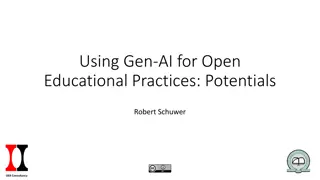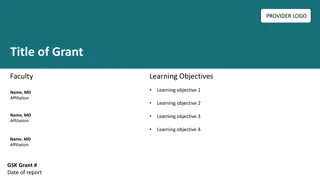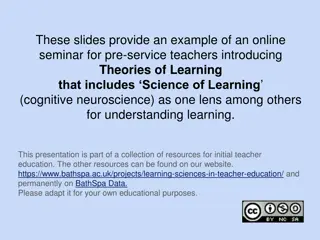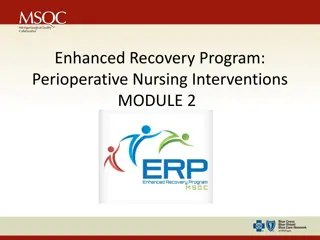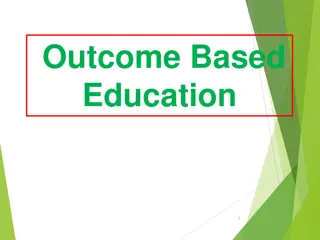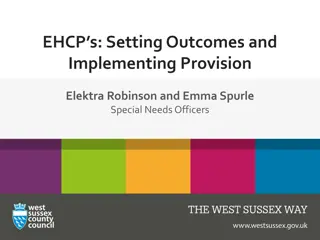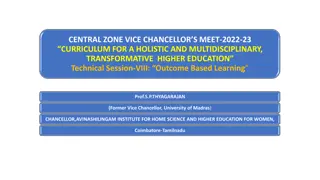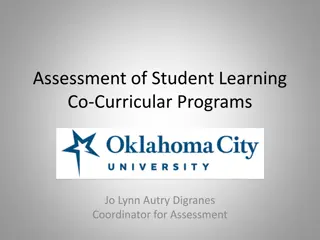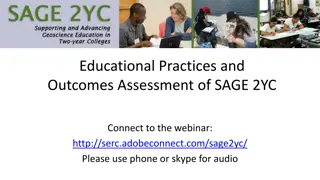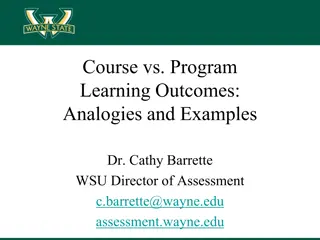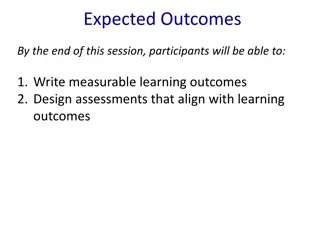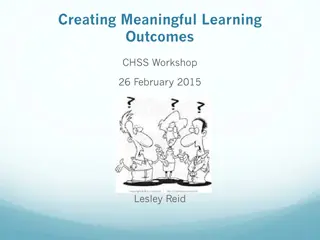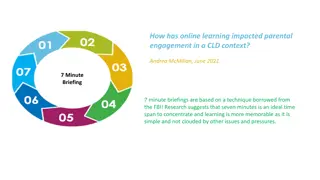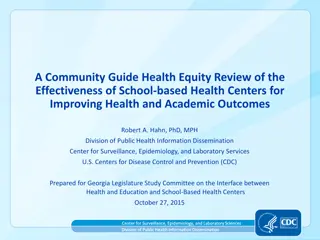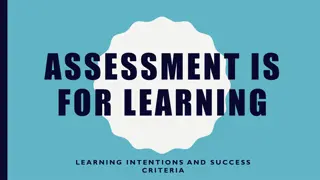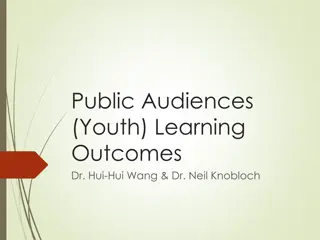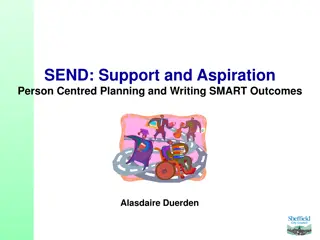Effective Educational Practices for Enhanced Learning Outcomes
Enhance educational practices by setting clear learning objectives, identifying practice gaps, and addressing potential challenges to facilitate meaningful learning experiences. Focus on measurable outcomes, engage learners through case-based discussions, and promote collaboration for increased knowledge retention and application in practice.
Download Presentation

Please find below an Image/Link to download the presentation.
The content on the website is provided AS IS for your information and personal use only. It may not be sold, licensed, or shared on other websites without obtaining consent from the author. Download presentation by click this link. If you encounter any issues during the download, it is possible that the publisher has removed the file from their server.
E N D
Presentation Transcript
What to Include What to Include List two to three goals that highlight the instructional content and/or expected learning outcomes of your presentation. Examples of expected results include increasing knowledge/skills and, when appropriate, applying new strategies to make practice modifications. Outcomes should be grounded in real expertise (what are the best performers deciding/doing?). Address potential challenges/barriers to change during your talk and discuss potential solutions so that learners are better equipped to make changes in practice if needed.
Disclosure Disclosure List your employer along with any potential conflicts of interest. If you have none, please enter the following statement: I have no conflicts of interest to disclose. Speakers are also required to disclose the following, if applicable, to the audience at the beginning of your presentation (in accordance with ACCME standards and Food and Drug Administration requirements): Any vested interest or intention to discuss off-label and/or investigational use of pharmaceuticals or devices. The existence of any financial or other relationship you have with the manufacturer(s) or any commercial product(s) or provider(s) of any commercial services discussed in an educational presentation IF your disclosure that is displayed on the disclosure slide is not current.
Learning Objectives Learning Objectives Learning Objectives are not teaching objectives or goals statements about the purpose of a presentation. Learning Objectives are specific and measurable, not broad and unquantifiable. Learning Objectives are detailed descriptions of what participants will be able to do as a result of attending a presentation. Use a single action verb (refer to Bloom s Taxonomy list on the next slide) to indicate a measurable outcome in competence or performance as a result of attending a presentation.
Learning Objectives Example Learning Objectives Example Describe what the learner is expected to do differently, keeping in mind your identified practice gaps, needs, and expected results. Well-Defined Learning Objective example: Upon completion of this activity, attendees will be able to identify which patients would be eligible for weekly hyperfractionated breast irradiation by the current trial. Poorly Defined Learning Objective example: This session will provide a better understanding of hyperfractionated breast irradiation eligibility.
Effective Educational Practices Effective Educational Practices Talk titles should inspire curiosity. If you update your talk title, please send it to ASTRO staff so they can update the program. Consider making your talk case-based with decision points throughout. Use decision points as opportunities for attendees to take one minute and speak to one another about what they would do. People learn more when they collaborate. Spend less time on slides and more time on discussion, questions and answers, and attendee engagement. Be sure you know when your session will be addressing Q&A. Show how this education can help attendees make a meaningful, positive change in their day-to-day practice.
Conclusion/Summary Conclusion/Summary at the end of your talk at the end of your talk What are the main teaching points/takeaways from your talk? If applicable, include key takeaways after each section of the talk so the audience can digest the material as the talk proceeds. What changes and/or improvements in patient care should your audience make as a result of your presentation? How should the audience incorporate information into their current practice? How does your lecture improve their competency? How does your lecture address potential challenges/barriers?
Widescreen Format Widescreen Format To take full advantage of the widescreen format, we recommend that you build or convert your presentation to 16:9. If you would prefer to use your own PowerPoint template, you can change an existing 4:3 presentation into a 16:9 widescreen format. For PowerPoint 2010 and 2007, on the "Design" tab, click on "Page Setup". In the drop-down box, select "On-Screen Show (16:9)" and click "OK." If you are using Office 2003, click "File" and select "Page Setup" and then enter in "10" in the first field and "5.63" in the second field and click "OK." If you make this change on an existing presentation, your slides will expand to the new size. If you have any videos or photos in an existing PowerPoint, they might need to be resized (so they do not appear stretched). Check animations to ensure the elements line up correctly.



